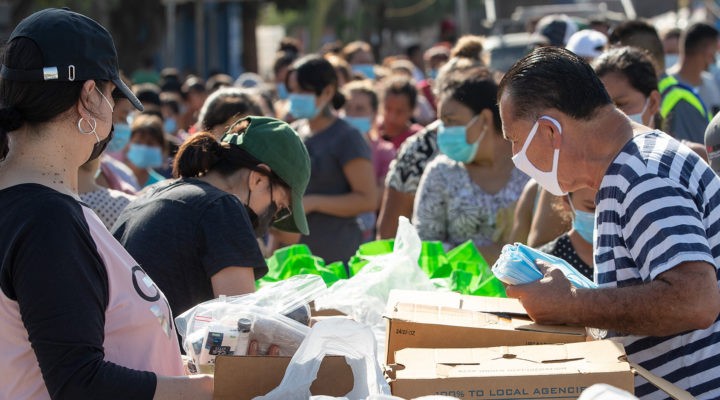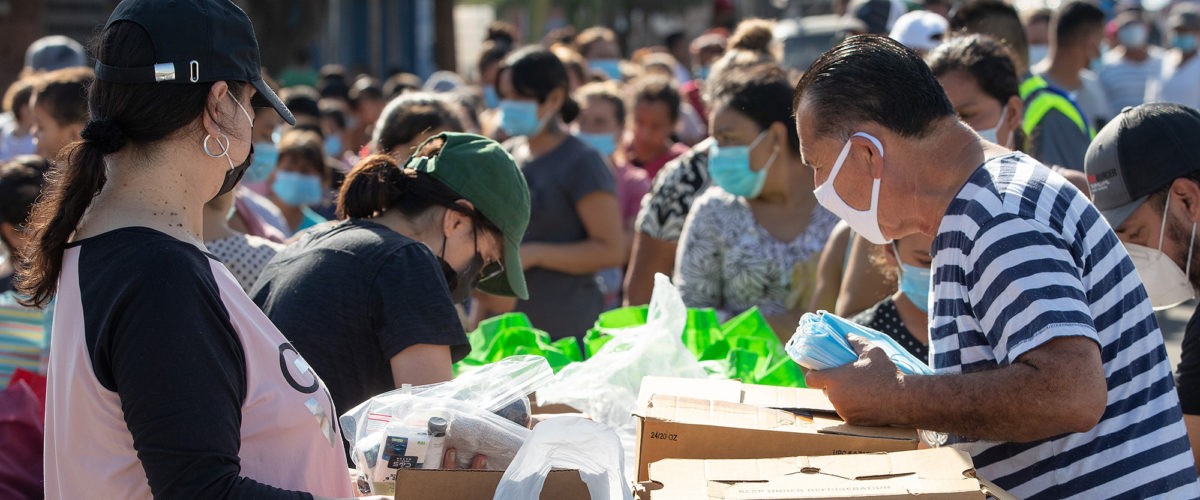The season of Advent always comes as a time of “now-and-not-yet.” Scripture readings for this period of the Christian year hark back to God’s promise to Israel of a deliverer and forward to the time when God’s promise of salvation will be fulfilled throughout creation. Many United Methodists are finding the prospect of Advent 2021 an especially uncomfortable “now” in the face of a “not-yet” that holds more trepidation than reassurance.
The coronavirus pandemic proved to be an instrument of tremendous breakdown for United Methodists. The enforced quarantine, marked especially by the twice-delayed global conclave known as General Conference, exposed the papered-over fissures in what was constructed to be a “big tent” of theologies held in creative tension. The practices that had typified “the connection” — especially gathering in “conference” and “singing our theology” — were swept aside by fear of COVID-19’s modern-day plague. Some congregations have gone nearly 21 months without the weekly linkage of in-person presence to one another and to God, expressed in joyful, communal music, the language of living prayer.
“The coronavirus pandemic proved to be an instrument of tremendous breakdown for United Methodists.”
Despite enforced separation, United Methodist life became ever more rooted in local congregations, even though the official “basic unit” of the denomination remains the regional body known as annual conference. John Wesley instituted annual conference as a way for itinerant ministers under his supervision to meet once a year in person to mark the trials and joys of their ministries, to receive inspiration and to mourn and remember those who had died in the previous 12 months.
The coronavirus pandemic transformed Charles Wesley’s great hymn, And Are We Yet Alive, from an oft-perfunctory theme song into the profound wonder of its origin: Faced with dangers within and without, United Methodists yet survive to gather once more (albeit online) and praise God for their continuance.
Yet separation from one another in local congregations somehow deepened United Methodists’ historic commitment to society’s vulnerable and underappreciated. New ministries geared toward pandemic realities emerged, while long-standing ministries took on deeper meaning.
In East Texas, members from Pollard United Methodist Church in Tyler distributed gift cards, homemade goods, and thank-you cards to the custodial staffs — those “essential workers” of the pandemic — at the district’s 31 schools. In Mechanicsburg, Pa., and Victoria, Va., United Methodist youths gained new awareness of what it means to lack shelter through a fundraiser known as a “sleepout for the homeless.” In Los Alamos, N.M., First United Methodist Church collected sleeping bags for homeless people. In Union County, Iowa, United Methodist churches banded together with a nonprofit called Sleep in Heavenly Peace to provide beds for children who have been sleeping on floors.
“Seeing with new eyes amid pandemic breakdowns, United Methodists addressed both immediate needs and unjust systems.”
Seeing with new eyes amid pandemic breakdowns, United Methodists addressed both immediate needs and unjust systems. Hamilton Park United Methodist Church in Dallas provided take-out meals for isolated and financially strapped individuals and families during the pandemic while also challenging local law enforcement that seemingly targeted people of color.
United Methodist congregations in communities of color, such as Camphor United Methodist Church in eastern Pennsylvania, offered their buildings as sites for COVID-19 vaccinations (a public health outreach that John Wesley, author of A Primitive Physick, would bless). Most of all, United Methodists joined other churches in embracing the technological wonder of hybrid worship, wherein liturgy performed by persons in a quarantined space was broadcast over the internet to reach millions of people around the world. Because of hybrid worship, the denomination actually became the worldwide church without borders that it always had claimed to be.
Blasted by earth-shattering change, the false veneer of institutional “connection” broke into shards. The polity that held the UMC together for more than half a century proved indefensible against mounting pressure to create a religious system suited to a 21st century environment.
While few in number — only 62 churches since 2019 — “disaffiliating” congregations’ specter looms over a fractious future. One vivid example, perhaps the equivalent of a 20th century “proxy war,” is taking place among Nigerian United Methodists, where longstanding ethnic rivalries are fueling ugly, even threatening conflicts between a strident traditionalist faction clutching fiercely at hierarchical structure and a loosely affiliated group of centrists and progressives fumbling toward a more regionalized denomination where LGBTQ acceptance can be contextualized.
Such break-ups grieve deeply those who have devoted much of their adult lives and professions to The United Methodist Church as it has existed since 1968, watching what they built falling, slowly or rapidly, into the dust heap of history.
“The United Methodist Church enters Advent 2021 as a mosaic of grief for what has been lost yet glimmering with faint hope.”
Thus, The United Methodist Church enters Advent 2021 as a mosaic of grief for what has been lost yet glimmering with faint hope. The promise of salvation — not “Methodist pie in the sky by-and-by” but deep longing for genuine wholeness in the here-and-now — seems as distant as when a young pregnant woman endured an arduous journey to comply with an oppressive regime’s regulations.
Perennially optimistic United Methodists find themselves manifesting uncharacteristic weariness in body, mind and spirit that not even a “narrative” of Christian community written by the denomination’s highest officials, its bishops, can relieve.
What the future beyond this Advent holds for United Methodists prompts much speculation; some of it may even be accurate, but only living the days to come will tell. If any Scripture can express the “now-and-not-yet” of United Methodism this season, a passage not usually associated with Advent may say it best: “If they had been thinking of the land that they had left behind, they would have had opportunity to return. But as it is, they desire a better country, that is, a heavenly one. Therefore God is not ashamed to be called their God; indeed, he has prepared a city for them” Hebrews 11:15-16.
Cynthia B. Astle is a veteran journalist who has covered the worldwide United Methodist Church at all levels for more than 30 years. She serves as editor of United Methodist Insight, an online journal she founded in 2011.
Related articles:
United Methodists chafe at their wilderness wandering
Analysts hope to help congregations understand the options with potential United Methodist split


